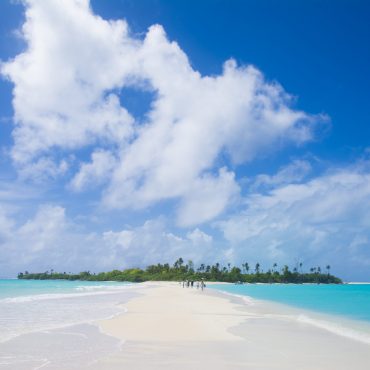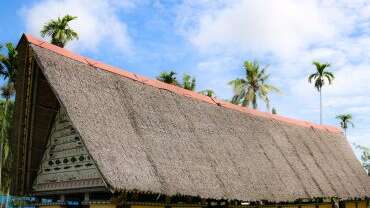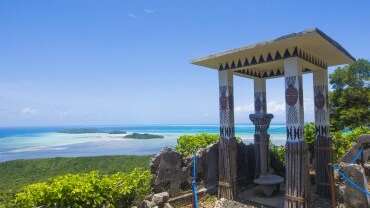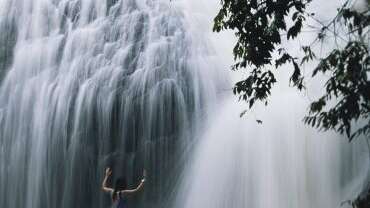Nature in Palau
For a tiny archipelago with only a 328.14 square km landmass, Palau has an intriguing biodiversity of its own. Of the volcanic, coral atoll, and limestone islands of Palau, approximately three-fourths is covered in native forest and mangrove. These pristine forests of Palau are the most species-diverse in Micronesia with 1400 species of plants, and an estimated 194 endemic plant species, including 23 endemic species of orchids.
If you like reptiles, you could find at least 46 species of reptiles and amphibians, and at least 12 of these are endemic. Sea turtle lover? The most common sea turtles are the hawksbill turtle (ngasech) and green turtle (melob), which are the only two species that nest on beaches in Palau. The leatherback, loggerhead and olive ridley turtles occasionally pass through Palau’s waters. Palau’s saltwater crocodile (ius), an endemic species, can be seen in the mangrove estuaries or even as far inland as Lake Ngardok Nature Reserve. There are also two species of sea snakes, including the black and white banded sea snake (mengerenger), and several species of non-poisonous snakes found on land.
Palau has 2 endemic species of bats, the large Fruit Bat which can be seen during the day, and the small, nocturnal insectivorous Sheath-tailed Bat found around limestone caves. For birders, you will note that Palau has 168 recorded species of birds, and 13 of these are endemic, only found in Palau. Some of the rarest birds to see are the Palau Ground Dove (Omekrengukl) and the Giant White-eye, which can only be found in certain locations in the Rock Islands. The Palau Megapode (bekai) is now an endangered species. Some of the endemic birds also have the most intriguing way of life, such as the Palauan flycatcher (chermelachull) which sings in the rain and decorates its nest. One of the best places to view some of the endemic birds is at the Ngermeskang Bird Sanctuary, and an ibird app including Palau has been developed on https://itunes.apple.com/us/app/ibird-hawaii-guide-tobirds/id943689969?mt=8#.
Palau is also home to one of the world’s most unique phenomena – the Rock Islands. These are collections of largely uninhabited, mushroom-shaped islets located in a vast lagoon protected by fringe reefs from the fury of the open sea and they house one of the world’s greatest concentrations of coral and marine life. Palau, to date, has 586 islands with Koror and its southern lagoon containing a majority of 424 Rock Islands.Schools of fish feed in the shallows of the reefs, exotic birds nest in high reaches of these Rock Islands and on occasion, majestic birds soar directly above with imperial bravado.
Attractions most can only dream of also include the daring and the unusual – like Jellyfish Lake, where two types of jellyfish can be found, namely the golden jellyfish known as Mastigias and the moon jellyfish known as Aurelia. This intriguing lake departs radically from convention for it is an enclosed body of water wherein, over the course of millennia, resident jellyfish have completely lost their sting because they have not had to fight off predators. Instead, they spend their days in privileged leisure, pulsating gently from one side of the lake to the other while catching the sun’s rays and feeding on the generous algae rich waters.
There is also the incomparable Ngerukuid Islands Nature Reserve commonly referred to as “70 islands”, a group of islands with maze like channels and aquamarine water. Regular sightings of Manta Rays are not uncommon either, as in the German Channel where they come in to hover over rock outcroppings, while having their expansive slippery surfaces serviced by cleaner wrasses.
The second largest landmass in Micronesia is Babeldaob Island, which is joined to Koror by the Japan-Palau Friendship Bridge. Eighty percent of Babeldaob island is covered by mangrove forests, with long tentacle-like roots that emerge from the sides of the trees trunks and branches and hang down to reach the water. These are nurseries for marine life, and if you look closely, you can glimpse a school of archerfish that readily spits out beads of water to hunt down food. The seagrass bed is home to rabbit fish and various species of sea cucumbers.
Past the seagrass bed is Palau’s inner reef, where you may find the giant trevally, white-tip reef shark, green turtle, giant grouper, eel and rainbows of reef fish. The clear waters of the reef crest, like a pristine garden, contain beautiful species of coral (polyps) and small reef fish. Most of Palau’s dive sites are located on the Outer Reef, and this is also true around Babeldaob island, which has channels with manta rays and aggregations of groupers. Deep drop-offs also boast enormous fan corals and pelagic fish.
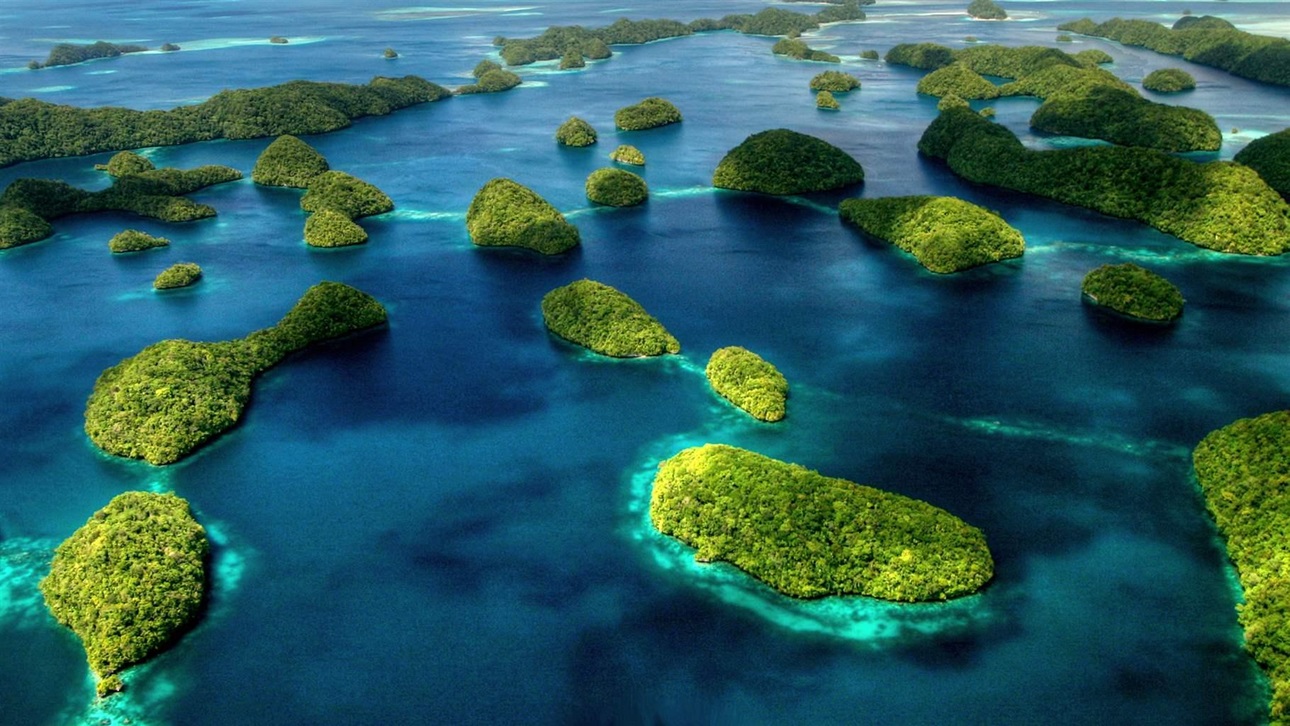
NATIONAL MARINE SANCTUARY
In Palau, the Ocean provides life for all of us, and will remain to do so into our future.
Our people have lived according to the terms of the Ocean, as it was the very thing that sustained and continues to sustain our existence. For generation upon generation, Palau’s Traditional Leaders have preserved our marine resources by placing vulnerable reef areas off limits to fishing. This traditional conservation method, known as a “bul,” has preserved the livelihoods and strengthened food security of the Palauan people for generations.
Today, Palau is faced with new unprecedented challenges – from climate change and ocean acidification to increasing pollution and illegal fishing. Palau is now reaching to the past to the caring wisdom of our ancestors and implementing the age old conservation method “bul’ in these modern times. This traditional practice is Palau’s foundational step towards effective conservation and sustainable management of its marine environment through the establishment of the Palau National Marine Sanctuary.
On October 28, 2015, President Tommy E. Remengesau, Jr. signed into law the Palau National Marine Sanctuary Act, one of the world’s most ambitious ocean conservation initiatives to date aimed at not only protecting Palau’s marine resources, but also at protecting the world’s tuna stocks.
This landmark legislation creates a no-take Marine Sanctuary (approximately 500,000 square kilometers) covering 80% of Palau’s Exclusive Economic Zone (EEZ), in which no fishing will occur, and creates a Domestic Fishing Zone covering approximately 20% of Palau’s EEZ in which traditional and domestic fishing activities will be allowed to provide fish solely for the domestic market.
Stewardship of the ocean and working within the limits of the environment has always been the way of the Palauan people. Balancing growth and sustainability remains in the best interests of this nation and its people. Palau’s economy is the environment and the environment is its economy and the Palau National Marine Sanctuary is the foundation that supports the sustainability and balance between our natural resources and economic development, ensuring that all of what makes Palau the Pristine Paradise it is today, will last for generations to come.
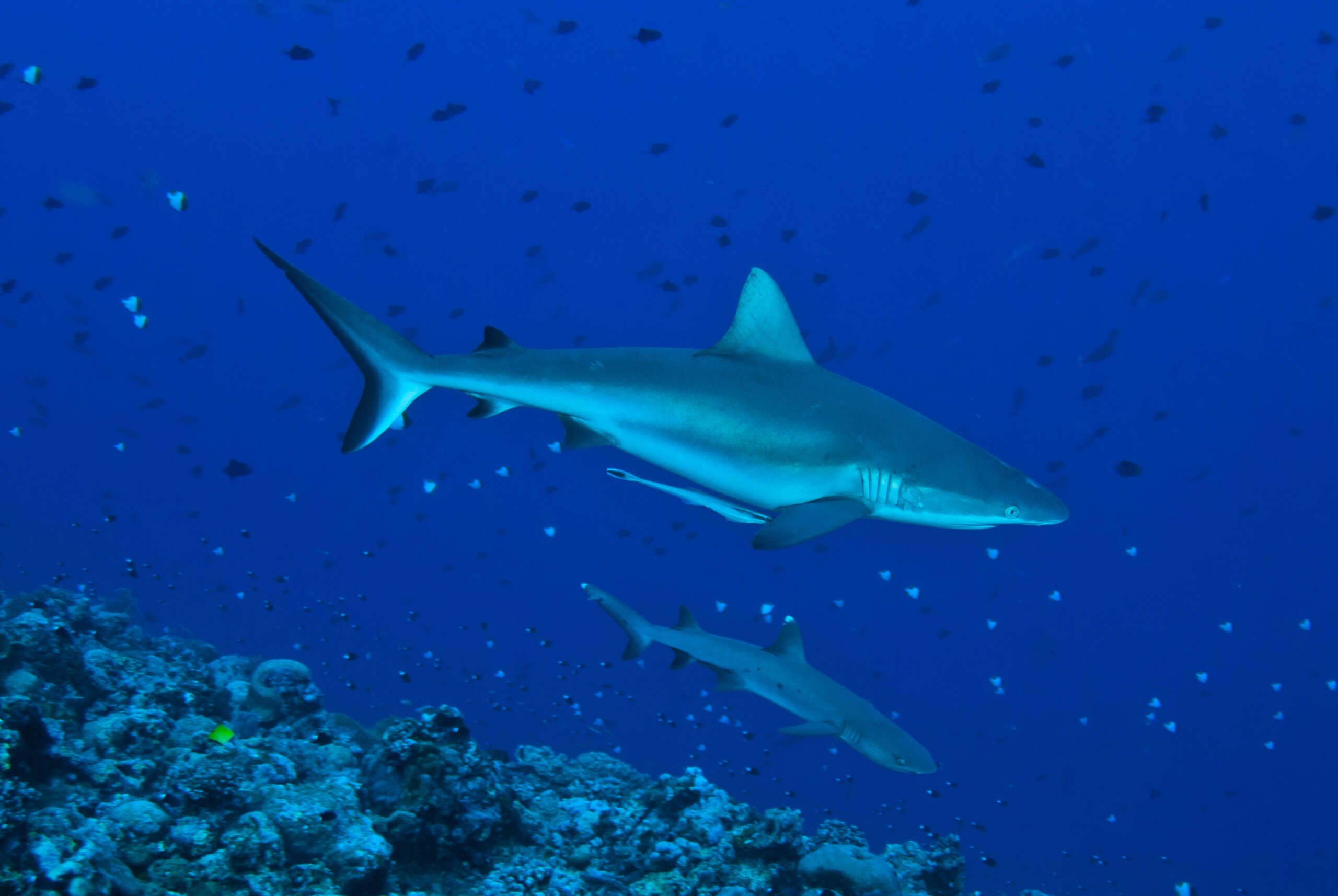
SHARK SANCTUARY
In 2009, Palau became the world’s first national shark sanctuary, ending all commercial shark fishing in our waters and giving a sanctuary for sharks to live and reproduce in our 237,000 square miles of ocean.
Witness the wonders of our seventeen species of sharks that will thrive because of the efforts of dedicated individuals that have worked towards the goal of protecting these amazing creatures.



